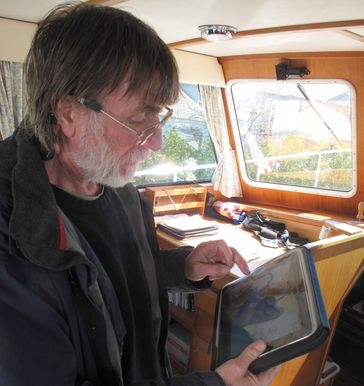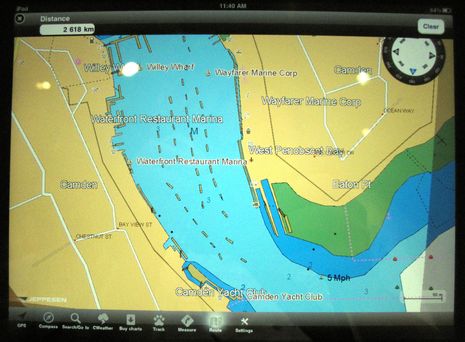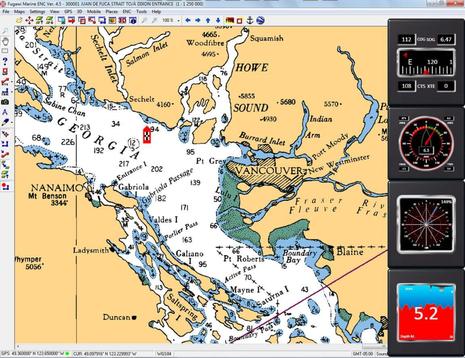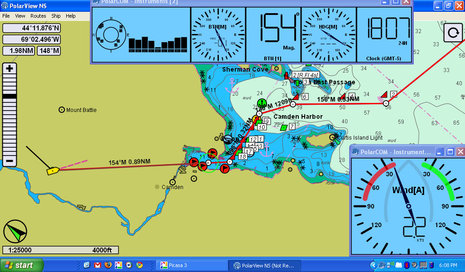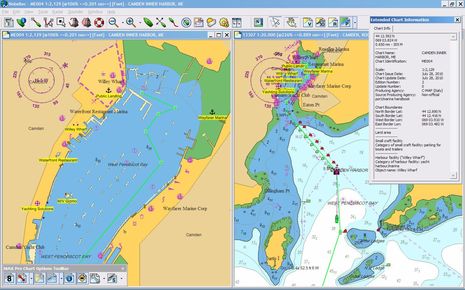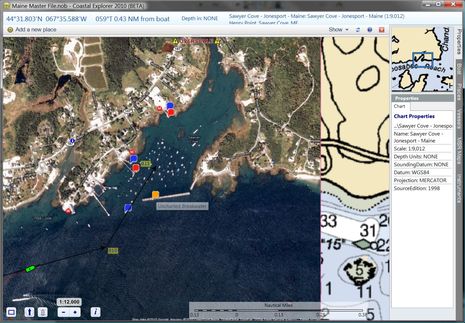Nigel Calder update, charts & HyMar
Nigel Calder and I talked non-stop for about six hours on Friday (and probably could have kept going if we were younger men). He visited because he’s working on a new edition of How to Read a Nautical Chart and wanted to check out the latest in electronic charts, particularly the mobile apps. I was happy to help with that, and I also got to ask some questions about Gizmo’s systems and find out what’s up with his marine hybrid project. I’ve always liked Nigel’s chart book; while it’s largely a nice reprint of NOAA’s Chart 1 guide to symbology — no longer published by NOAA, though available for download — it also includes some terrific history of cartography along with analysis of where it’s going electronically. I’ll be particularly interested to see what he discovers when visiting the Chart of the Future project at UNH, which is apparently related to a new vector chart standard (interesting S100 PDF here). I was also pleased to learn that Nigel shares my enthusiasm for improving charts with crowd sourcing and even for 3D charting, and he’s not a guy who’s easily impressed with the latest thing…



